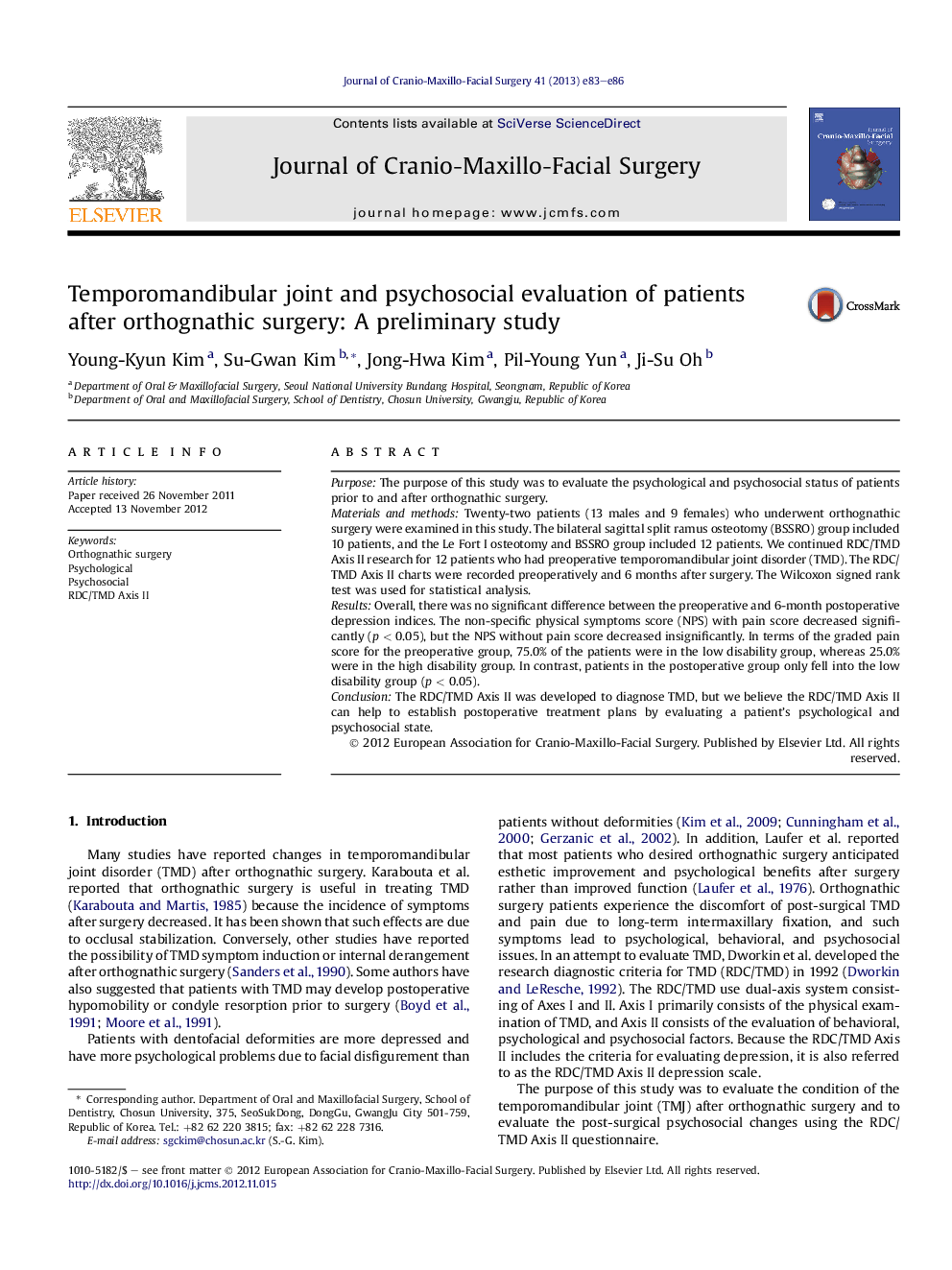| Article ID | Journal | Published Year | Pages | File Type |
|---|---|---|---|---|
| 3142976 | Journal of Cranio-Maxillofacial Surgery | 2013 | 4 Pages |
PurposeThe purpose of this study was to evaluate the psychological and psychosocial status of patients prior to and after orthognathic surgery.Materials and methodsTwenty-two patients (13 males and 9 females) who underwent orthognathic surgery were examined in this study. The bilateral sagittal split ramus osteotomy (BSSRO) group included 10 patients, and the Le Fort I osteotomy and BSSRO group included 12 patients. We continued RDC/TMD Axis II research for 12 patients who had preoperative temporomandibular joint disorder (TMD). The RDC/TMD Axis II charts were recorded preoperatively and 6 months after surgery. The Wilcoxon signed rank test was used for statistical analysis.ResultsOverall, there was no significant difference between the preoperative and 6-month postoperative depression indices. The non-specific physical symptoms score (NPS) with pain score decreased significantly (p < 0.05), but the NPS without pain score decreased insignificantly. In terms of the graded pain score for the preoperative group, 75.0% of the patients were in the low disability group, whereas 25.0% were in the high disability group. In contrast, patients in the postoperative group only fell into the low disability group (p < 0.05).ConclusionThe RDC/TMD Axis II was developed to diagnose TMD, but we believe the RDC/TMD Axis II can help to establish postoperative treatment plans by evaluating a patient's psychological and psychosocial state.
